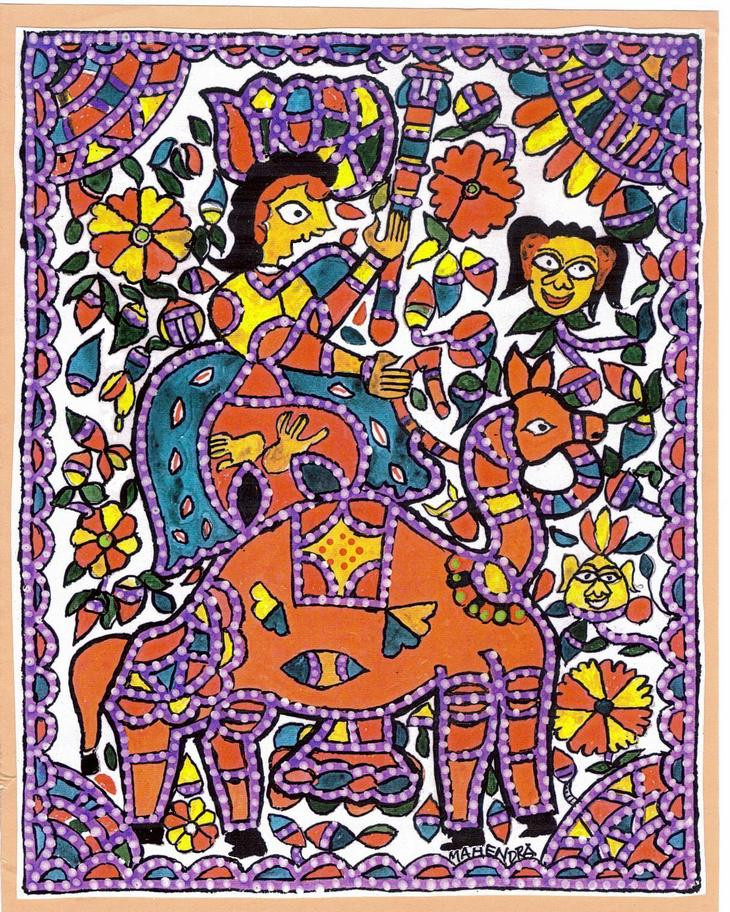[This painting is made by famous artist and cartoonist Mahendra Prasad]
[This piece of article is provided by Ms. SONAM DHINGRA who is a prominent art teacher at City Vocational Public School, Meerut, by profession and an artist herself. She has done in-depth research on indian arts and crafts.]
In the beginning, only a few Brahmin women were given the opportunity to practise this art, but after some ten years, women from the Kayastha community came forward with a new style. Till recently, the women of the Harijans were not given an opportunity to experiment with this art. There is an interesting story behind it. The women of higher castes were not allowed to cross the
boundary of their houses but wanted to do some work to generate income for their family, mainly during natural calamities. However, the women of lower castes helped their husbands or male counterparts by working in agricultural fields and as maids in the houses of the higher castes. At this time, some people thought of involving the women of higher castes in some creative work.
The Kayasthas were a landless community and their women were also attracted towards this art form as a way of earning some income. They worked hard on the art and also in entrepreneurship and finally got recognition in the seventies. The Kayastha women earned a name for their elaborate line paintings, and most of them do outline paintings only. These two forms of Mithila expression, both from women of the higher castes, embody traditional Mithila art. The third group from the Harijan community came forward in the 1980s. The women of the Dusahdhs and the Chamars were doing all forms of traditional paintings for ritual purposes as well as for decorating their dwellings. Influenced by the entrepreneurship and experiment of the Brahmins and Kayasthas, they experimented with Godna (tattooing) and other bright colours in their paintings. Their pictorial alphabet began to include lines, waves, circles, sticks and snails, opening the way to stylisation and more abstraction. It also worked well. Now, women of all castes practise this art as an income-earning profession.
The artists rely on nature for colours. It provides them with a wonderful range of natural hues derived from clay, bark, flowers and berries. The colours are usually deep red, green, blue, black, light yellow, pink and lemon. As the deep colours create mood, they have an important role to play. For instance, energy and passion find expression through the use of red and yellow, as monochromes crash over large surfaces of the painting. Concentration of energy is best reflected in red, while green governs natural leaves and vegetation. The Brahmins prefer very bright hues while the Kayasthas opt for muted ones. In the Harijan style of paintings, the handmade paper is washed in cow-dung. And, once the paints are ready, two kinds of brushes are used: one made out of bamboo twigs for tiny details and the other prepared from a small piece of cloth attached to a twig.



